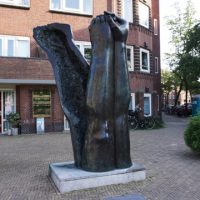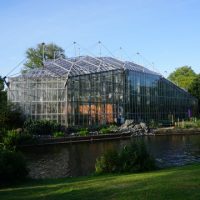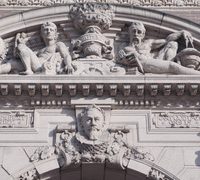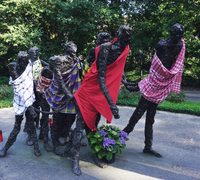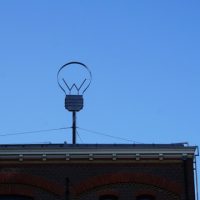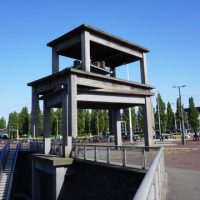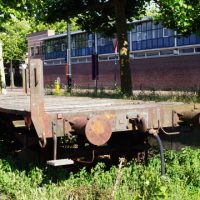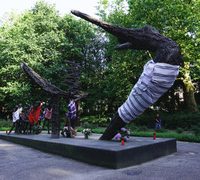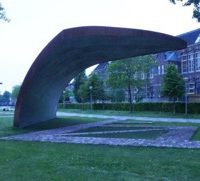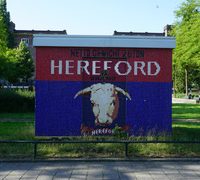Monument for Martin Luther King, Airco Caravan, 2018
Kattenburgerkade
In the early months of 2018 a small statue of Martin Luther King suddenly popped up here on Kattenburgereiland. It is one of fifty identical statues with which the artist Airco Caravan pays tribute to individuals, institutes and locations that continue the mission of Martin Luther King – the dream of a world without racism – fifty years after his assassination. The National Slavery Monument, the Monument against Apartheid and Racism, and the statue Dock Workerin East Amsterdam, where the silent procession for Martin Luther King once began, are among those locations honoured with one of these statues, while the Tropenmuseum and The Black Archives are among the institutions. There is one of the statues in the South-East Amsterdam art route next to the statue of the Surinamese freedom fighter Anton de Kom, while in the city centre another graces the statue of Multatuli, whose 1860 novel Max Havelaarwas already a protest against the oppression of the population of the Dutch East Indies. Gloria Wekker received a statue for her research on racism in the Netherlands, and Sylvana Simons for her political contribution.
Caravan wanted to remain anonymous, ‘ring the bell and run away’, but she had to reveal her identity to be able to donate the statues. The totality of fifty statues forms a magnificent monument to Martin Luther King, not in the form of a memorial statue, but as a monument that honours those places where his ideas live on today, places where human rights are central and are defended.
The statues are not an award, Caravan emphasises. She worked intuitively and donated the statues to progressive, critical institutes and individuals for whom she has a lot of respect. For her, statues too play a role on the way to the world that King envisaged. ‘I have learnt a lot from this project. I cannot simply pronounce the words ‘Golden Age’ aloud any more. Our history needs to be told in a really different, more complete way. And statues certainly contribute to that! It is a tangible element that is seen and the various statues that stand in Amsterdam already tell a clear story, which I have been able to bring up to date with my own little statues.’
What was the figure of Martin Luther King doing here on this location without a monument? It was here that the slave shipLeusdenwas built on the De Eendracht wharf in 1720. The Leusdenmade some ten slave voyages for the Dutch West India Company (WIC) from the Netherlands via the former Dutch Gold Coast (present-day Ghana) to Surinam, carrying an average of 660 slaves per voyage. On 10 March 1737 the Leusdensailed from Texel on its last voyage. Seven hundred enslaved persons were embarked in the Dutch Gold Coast. Shortly before arriving in Surinam, at swimming distance from the shore, the ship struck a mudbank. Reportedly fearing a revolt, the crew sent their human freight into the hold and battened down the hatches. More than six hundred drowned imprisoned in the hold. Sixteen survivors were sold on the shore, the rest were written off as lost cargo, an economic blow to the company. The media devoted no more than a brief item of shipping news to the disaster and the biggest shipping disaster in Dutch history virtually disappeared from memory. There is no monument to it in the Netherlands or Surinam.
Do we erase history when we replace controversial street names and monuments? Or have we already erased part of it? Caravan: ‘The biggest shipping disaster in Dutch history – you ought to learn about that at school, shouldn’t you?’. ‘The Black history of the Netherlands is a question of Black and White, it is our shared history’.
You can find here more locations and information about the Monument for Martin Luther King.

